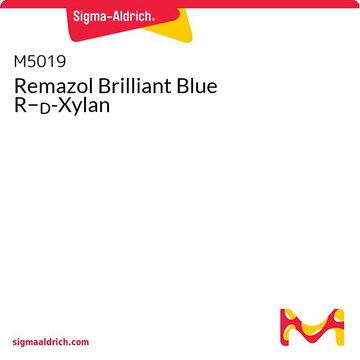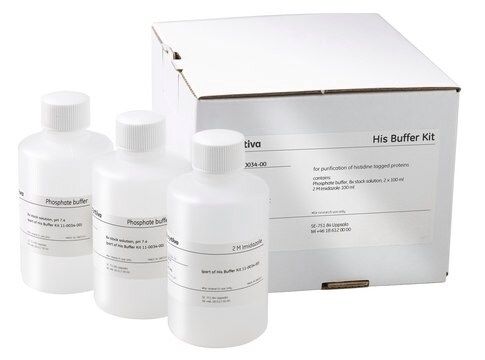68268
Imidazole buffer Solution
BioUltra, 1 M in H2O
Synonym(s):
Imidazole solution, Glyoxaline solution
About This Item
Recommended Products
product line
BioUltra
Quality Level
form
liquid
concentration
1 M in H2O
impurities
DNases, none detected
RNases, none detected
insoluble matter, passes filter test
phosphatases, none detected
proteases, none detected
pH
9.5±0.5
density
1.01 g/mL at 20 °C
SMILES string
c1c[nH]cn1
InChI
1S/C3H4N2/c1-2-5-3-4-1/h1-3H,(H,4,5)
InChI key
RAXXELZNTBOGNW-UHFFFAOYSA-N
General description
Application
- of calmodulin-binding buffer 1 (CBB1) for the tandem affinity purification (TAP) of TAP-tagged proteins together with co-purifying proteins
- of lysis buffer, and SDS loading buffer for His-ubiquitin pull-down assays
- of imidazole wash and elution buffer for protein purification
Signal Word
Danger
Hazard Statements
Precautionary Statements
Hazard Classifications
Eye Dam. 1 - Repr. 1B - Skin Corr. 1C
Storage Class Code
6.1C - Combustible acute toxic Cat.3 / toxic compounds or compounds which causing chronic effects
WGK
WGK 2
Flash Point(F)
Not applicable
Flash Point(C)
Not applicable
Personal Protective Equipment
Regulatory Listings
Regulatory Listings are mainly provided for chemical products. Only limited information can be provided here for non-chemical products. No entry means none of the components are listed. It is the user’s obligation to ensure the safe and legal use of the product.
EU REACH Annex XVII (Restriction List)
Choose from one of the most recent versions:
Already Own This Product?
Find documentation for the products that you have recently purchased in the Document Library.
Customers Also Viewed
Our team of scientists has experience in all areas of research including Life Science, Material Science, Chemical Synthesis, Chromatography, Analytical and many others.
Contact Technical Service








